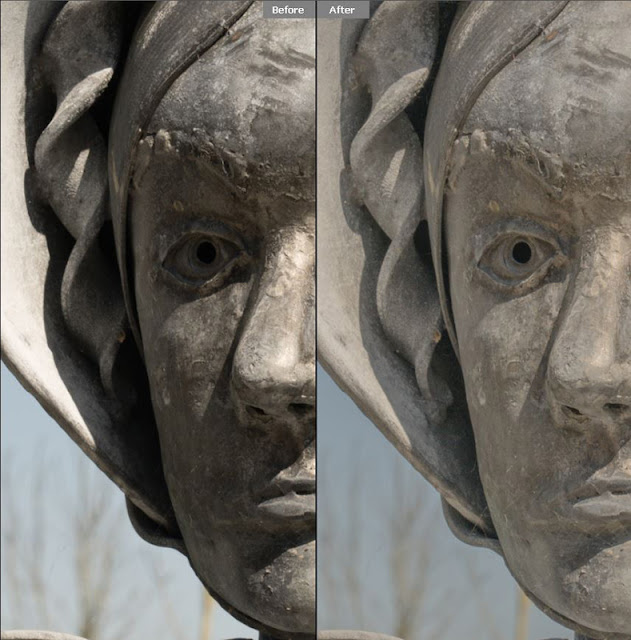The Sony a7 III. It’s fair to say that the first quarter of 2018 has been dominated by the launch of the full-frame, 24.2 MP mirrorless camera. It’s proving exceptionally popular with our customers, so we thought we would test drive it for you! We’ve also included a handy video review, which you can find further down the page.
There’s no doubt it’s making waves in the industry and among customers – since its launch in March 2018 it appears on 42.6 million search results on Google (just a month after launch!). A rival camera has ‘just’ 8.2 million after 9 months. It’s not science, but it certainly illustrates how the Sony a7 III launch has taken the market by storm.

So Why the Fuss?
In short – value for money. At circa £2000 it is entry level for pro photographers, with the cost generally accessible for enthusiasts. Sony have cleverly positioned themselves on the fringes of these two markets. The lenses can be expensive for fast glass, but E-Mount adapters are now available (such as Metabone).
The a7 III has improved notably over the a7 II, and has nabbed a load of the best features from Sony’s flagship mirrorless full-frame body – the Sony a9. We’re about to tell you why the a7 III is killing it in terms of ability – but for the time being trust us when we say you get a lot of camera for your money.
 |
| The Sony a7 III’s high ISO range produces minimal noise – this owl was shot at ISO 2000 |
Autofocus for all conditions
Sony have not held back on their spec – in fact they’ve taken the autofocus (AF) system straight from their flagship Sony a9. We tried the a7 III at our Park Camera’s Wildlife Day, and the AF stood out. Every time you moved the camera, the focus selection point(s) were exactly where you expected them to be.
We tested this further by crouching down and panning the camera across a load of undergrowth beneath a hedge. We wanted to see how it handled focusing at different depths – the undergrowth presented plenty of challenges if you were standing still, let alone while panning around. It handled this incredibly well.
 |
| The AF system locks on to your focal point with minimal fuss |
The good news here is that if you cannot find your focus point, you can select this intuitively on screen.
I don’t like to delve into spec for the sake of it – usability is far more important for me. But when you consider that the a7 III has 693 phase-detection AF points covering 93% of image area (with 425 contrast AF points), you can appreciate why it is so accurate. Faster image sensor readout allows the MK III to focus (in low light) twice as quickly as its predecessor.
Eye AF stands out
If ‘eyes are the windows to the soul’, then the a7 III pays homage to this. Powerful portraits often have pin-sharp focus on the eyes – they convey a person’s personality and can set the mood of a photograph.
The a7 III’s Eye AF is dead simple to use – press the central button on the control dial, vaguely point in the direction of your subject’s eye, and it locks on. Instinctive to use and easy to see on the screen, it works even in backlit situations and a fully wide aperture (we tested it at f/1.4).
 |
| Once the Eye-AF has locked in, it is superb at tracking movement |
Perfect for allowing your subject to be at ease and move in the frame, it has the potential to free up your photography and get a natural shot of your subject. We tried it in dappled shade, shooting while circling a still subject (thanks James!), and then with the subject walking towards and past us.
At a guess I’d say Eye AF achieved a 90% success rate. From a challenging test, and certainly with an operator that is prone to human error, this was very impressive. As always, it’s the small touches that delight – we love how in playback mode, one touch of a button zooms it in to the Eye AF focus point – great for a quick review.
Testing the a7 III’s video
[su_youtube url=”https://youtu.be/U0MqkLIu1iA”]
There are some interesting field tests online, pitching the a7 III against various full-frame SLRS. The trend between these comparison tests show that while image quality often comes out on equal par, a7 III offers more on the video front. Having seen our video man Gareth wax lyrical after two days shooting with it, I’ll surmise:
• 4K video recording across the full width of the full-frame image sensor
• No pixel binning – provides exceptional depth and quality
• Records up to 120 fps – allows 4-5x slow motion in full AF with AF tracking – wow!
• Improved location of the record button.
Sensor power that embraces low-light shooting
The image quality is superb, thanks to Sony’s 24.2MP back-illuminated Exmor R CMOS image sensor. It allows 15-stops of dynamic range at low sensitivities, and the ISO range is incredible – 100 – 51200 (expandable to ISO 50 – 204800 for still images). You can comfortably push this to circa 6000 ISO without visible noise.
If you then factor in the 5-axis in body stabilisation, then you realise that for stills you have great options for handheld shooting in low light, whilst the above factors all help video performance.
 |
| The impressive dynamic range allows for highlights and shadows to be adjusted to extremes, without any visible noise |
Drawbacks
So it can’t all be good news? My main reservation lies more with the world of mirrorless than the a7 III specifically – I’m still not a fan of using an electronic viewfinder. While the LCD screen is pretty decent – it tilts up by 107° and down by 41°, I find a swivel offers more flexibility. Shooting in bright daylight was tricky with glare, although exposure adjustments made using the screen did render true when reviewed in Photoshop.
The small body feels slightly precarious when paired with larger, fast lenses – I used it with the Sony FE 85mm GM f/1.4 and24-70mm f/2.8 – both felt top-heavy. The deep grip helps, but I would definitely be using a strap for peace of mind.
Saying this – the camera felt instinctive to use, comfortable to hold and the ergonomic design makes shooting in Shutter, Aperture or Manual mode a breeze.
 |
| Shooting in Manual mode felt instinctive and allowed for intuitive exposure adjustments |
Game Changer?
Which leaves us with a pertinent question – have Sony changed the game here? It sounds like hyperbole, but you have to ask – what on earth do the next generation of Sony alphas have to offer to distinguish themselves from the a7 III?
Have Sony actually cannibalised their own product range by offering so much on the latest ‘entry level’ body? Will their rivals rise to the challenge? We hope it will drive innovation and encourage better spec for your buck.
Whether it revolutionises the spec range for the £2000 mark full-frame camera remains to be seen. What we do know is that this tidy, instinctive and high-performing workhouse will be loved by pros, enthusiasts, and certainly is by us.
Well played, Sony.
(parkcameras.com, http://bit.ly/2Kiw4vl)


